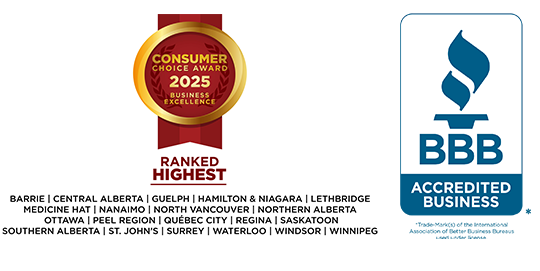The Government of Canada provides student aid to Canadians in partnership with the provincial and territorial governments through a single streamlined application process. The Canada Student Loan Program is comprised of two funding options: Canada Student Grants and Canada Student Loans. Both share a goal to make education more affordable for Canadians.
Canada Student Grants
Canada Student Grants provide students with financial assistance which does not have to be repaid. There are different grants available to students based on a variety of qualifying criteria. Eligibility is assessed by the student’s province or territory of residence when their application is processed.
The grant amount that students are eligible to receive is calculated with the following criteria in mind:
- province or territory of residence of the student
- total income of the family
- whether the student has dependents
- amount of the student’s tuition fees, together with their living expenses
- if the student has a disability
Canada Student Loans
Canada Student Loans, on the other hand, do have a repayment requirement. These differ from other loan types (bank loans credit cards, lines of credit) in that interest is typically lower and does not start to accrue when funds are advanced to students. Rather, Canada Student Loans are interest-free loans, while students are attending school and during the initial six month non-repayment period. The six month non-repayment period begins:
- when the student completes their final semester at school (or graduates from their program)
- if and/or when a student transitions from full-time to part-time studies
- when a student leaves school or takes a leave of absence from their studies
Although the Canada Student Loan Program provides a six month non-repayment period, students can choose to make payments at any time toward their loans. There is no penalty for repaying student loans early. In fact, if students are able to repay their loans before the six month non-repayment period they will not pay any interest.
Canada Student Loans Program Statistical Review 2018–2019
Statistics Canada reports on the Canada Student Loan Program annually to assess and inform the federal government and Canadians about student financial aid. The most recent data available (Canada Student Loans Program – Statistical Review 2018–2019) provides the following information for the period August 1, 2018 to July 31, 2019:
- 535,000 students received total grants of $1.6 billion, (+18% from 2017-18)
- 625,000 students received total loans of $3.6 billion, (+7% from 2017-18)
- Average Canada Student Grant per recipient in 2018-2019: $3,030
- Average Canada Student Loan per recipient in 2018-2019: $5,719
- Average combined grants and loans per recipient in 2018-2019: $7,719
- Average student loan balance at the end of studies in 2018-2019: $13,367
- 333,000 students are beneficiaries of the Repayment Assistance Plan
Repayment Assistance Plan
If students experience financial difficulty making payments toward their Canada Student Loan, they have several options for assistance as part of the Canada Student Loan Program. Students can complete an online application form, to see if they qualify for help from the Government of Canada through the Repayment Assistance Plan (RAP).
Whether or not a student qualifies for government assistance depends on the student’s available income. In some instances, students may not be required to make payments that exceed a certain threshold — or the student may not be required to make payments at all. Other loan types (bank loans, credit cards, lines of credit) do not provide this kind of assistance, and the RAP is not applicable to loans other than Canada Student Loans.
If students qualify, RAP will gradually pay down the amount owing on student loans within fifteen years — or ten (10) years for students with a permanent disability. Students must re-apply for RAP every six months, to determine whether they still qualify for assistance under this program.
Revision of Terms Plan
In situations where individuals find the repayment terms of their student loans no longer fit their financial situation, they may apply to have the term extended. Students can increase the term to up to fifteen years, which allows for a lower and more affordable monthly payment. However, if the government agrees to extend the repayment term, the student will end up paying more interest over time.
Under the Revision of Terms Plan students can:
- Temporarily extend the repayment period
- Permanently extend the repayment period
- Make interest only payments for a short period (maximum of 12 months during lifetime of loan)
Students also have the option to reduce the repayment term and pay off the student loan sooner without being subject to a prepayment penalty., This can be a favourable option to reduce total interest costs for those who have the income to support making larger payments over a shorter period of time.
Canada Student Loan Rehabilitation
A default occurs when a student misses nine monthly payments while repaying their student loans. Canada Revenue Agency (CRA) is notified when a default occurs, which means the loan is in a collection status. If a student loan is sent to Canada Revenue Agency for collection, the student is disqualified from assistance until they catch up the missed payments.
Students may be able to have their student loan repayment terms reinstated (or rehabilitate the student loan) by contacting CRA and:
- applying to bring the student loan up to date (submit to their qualification process)
- making two regular monthly payments toward the student loan plus either:
- remitting payment of all outstanding interest owing on the student loan, or
- adding all unpaid interest to the balance of the student loan (one time only)
If students are successful with meeting the criteria necessary to bring their student loan out of collection, they will receive a revised student loan repayments schedule within 30 days.
Getting Help with Student Loan Debts
For many Canadians, student loan debt is a problem which cannot be resolved with the supports in place within the Canada Student Loan Program. Changing economic conditions, underemployment, and/or unexpected life events may prevent students from repaying their student loans.
Not being able to make payments toward student loans can be a major source of stress. Difficulties with student loan debt may also interfere with other financial goals such as travelling the world, buying a home, and retirement planning —as well as life goals like getting married or starting a family.
Like other loan types, student loans can be included in insolvency proceedings (Bankruptcy or Consumer Proposal), provided an individual ceased to be a student for at least seven years. However, even if an individual did not cease to be a student for at least seven years, it’s still worthwhile to schedule a Free Confidential Consultation with a Licensed Insolvency Trustee. Bankruptcy or Consumer Proposal may not be an option, but the Trustee will still be able to offer advice and explain the options available to deal with student loans and all other loan types.
Stressed that you can’t make your student loan payments? Already missed a student loan payment? Contact one of our Licensed Insolvency Trustees for a Free Confidential Consultation today. We’ll review your entire financial situation, discuss your financial and life goals, and determine your options for a financial fresh start.



